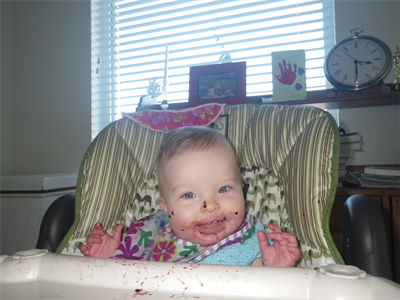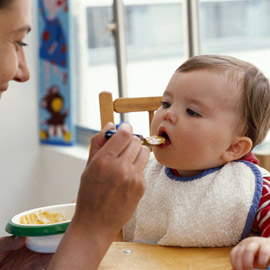If your a first time parent you probably have a lot of questions when it comes to introducing solids. Should I go all organic? What should I introduce first? How much should I give? Homemade vs store bought? Introducing solids to your little one for the first time can be both exciting and nerve wracking. More recently, baby- led weaning has gained popularity amongst parents. Let’s review this feeding phenomena with 3 tips for successful baby led weaning.
What is baby-led weaning?
Baby led-weaning (BLW) is advocated by former midwife Gill Rapley. Baby led-weaning simply means allowing your baby at around 6 months to start feeding him or herself. The term “weaning” is a commonly used in the United Kingdom which means “complementary” foods and does not mean weaning from the breast or bottle. According to the BLW experts baby’s at the age of six months are developmentally capable of feeding themselves. Babies are fed “chip size” food such as steamed broccoli with the steam, roasted sweet potatoes, fruit, bread, and meat in large enough pieces that the baby can grasp. You offer your baby bite size pieces of food that the rest of the family is eating and allow her/him to decide what and how much they are going to eat. No need to worry about purees, ice cube trays or using a food processor.

3 Tips for Making Baby-led weaning successful
1). Iron rich foods first

The same feeding guidelines apply to baby-led weaning as do spoon feeding your baby. At the age of 4- 6 months, especially breastfed babies, iron stores start to decrease. Iron rich foods are recommended as first foods for your baby. Iron fortified single grain cereals such as rice or barely, have traditionally been the first food introduced to babies because they easily digested. However, meat and meat alternatives are also a good first food. Meat is a rich source of iron and the iron is absorbed better than iron from non meat sources. Iron is also found in lentils, legumes, tofu, eggs, and some vegetables. The number one deficiency amongst young children is iron which may affect their growth and development. Feeding expert, Jill Castle, has raised the concern that the baby-led weaning style may be low in iron rich foods because iron rich foods are sometimes harder to chew. Incorporate daily iron sources into your babies diet at least twice a day.
2). Food Safety
Safety first. Always have your baby and or child sit in a comfortable and appropriate chair during feeding. Sit with your child to ensure they are not choking on their food. A common concern with baby- led weaning is the fear of choking, in most cases the baby is actually gagging and not choking. Gagging is a natural reflex and is very common in babies when they are learning to eat solids. By the age of 9 months the gagging reflex will lighten and eventually disappear. Remember a gagging reflex is safety mechanism. It is still important to avoid high risk choking foods such as whole grapes, hard raw vegetables and fruit, nuts, and large spoonfuls of nut butters.
3). Division of Responsibility
Parents play an important role in helping establish healthy eating habits. According to Ellyn Satter, feeding expert and dietitian, division of responsibility is one of the most important factors when it comes to feeding our children. It’s the parents role to decide what, when, and where food is being served. It is your baby and child’s responsibility to decide what to eat and how much to eat. Thus, provide healthy, well balanced meals and snacks regularly without pressuring your child to eat.
Puree vs Baby-led weaning

Every child is unique with their own little personality. If you have more than one child, you know each has their little own personality and what works for one may not work for the other. I fed my girls differently. When it was time to introduce Miss E to solids, I chose the traditional puree/ spoon fed style. It worked for her, she was a eager little eater who enjoy a variety of flavours and textures. When it was time to introduce solids to Miss Q it was a totally differently story. Initially, Miss Q had no interest in purees and liked the idea of feeding herself pieces of food. Following Miss Q’s lead,we did a combination of baby-led weaning and purees. Personally, I like the combination of the two methods, your little one gets to regulate his or her appetite with piece of mind that they are not missing out on important nutrients such as iron. As adults, most of us eat a combination of solids and purees, that is if you eat yogurt and or soups.
What method did you use to feed your baby? Did you use different methods with feeding your children?

No comments yet.